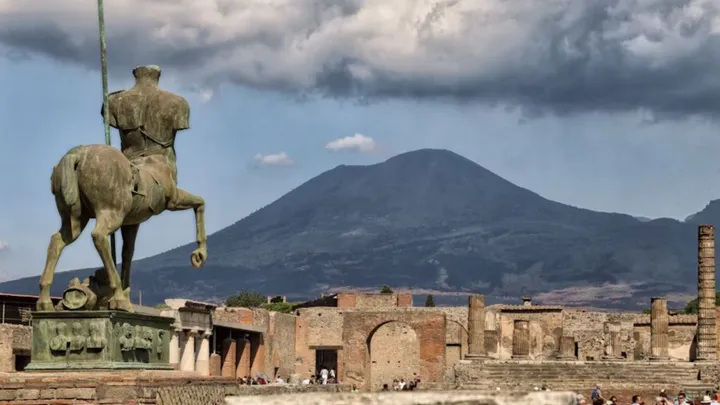

What Is the Best Month to Experience Pompeii Without Crowds?
Pompeii is one of those places that lingers in memory.
Walking down ancient streets feels surreal.
Stepping into houses where Romans once lived brings the past to life.
Visitors quickly see why this site is a must on any trip to Italy.
But crowds? They can take away the magic.
So the real question is simple. What is the best time to visit Pompeii without bumping into tour groups every few steps?
The Sweet Spot for Crowd-Free Exploration

The best time to visit Pompeii is during the off-season months of November through March, with a few important caveats that smart travelers need to know about.
Let's be honest here. These months aren't chosen because they offer picture-perfect weather. They're chosen because most tourists simply don't want to deal with cooler temperatures and the possibility of rain. Their loss, your gain.
During winter months, you'll encounter significantly lower crowds, though you'll need to dress for average temperatures ranging from 9 to 14°C. That's roughly 48 to 57°F for those thinking in Fahrenheit. Chilly? Yes. Unbearable? Not even close.
January: The Ultimate Crowd-Avoider's Month
If someone really wants to experience Pompeii in near solitude, January might just be their best bet. January brings the coolest temperatures, averaging between 8°C (46°F) and 13°C (55°F), which keeps the casual tourists away.
There's about a 31% chance of rain on any given day in January, but here's the thing most people don't realize: a little drizzle on ancient stones can actually make the experience more atmospheric. Plus, the rain rarely lasts all day.
For a hassle-free visit, opt for private transfers from the Amalfi Coast to arrive comfortably regardless of the weather.
Winter hours are shorter, with the site closing at 5pm instead of 7pm during summer. However, for most visitors, five hours is generally enough time to see the main highlights without feeling rushed.
February and March: The Gradual Warm-Up
February sits in that sweet middle ground where crowds remain manageable, but temperatures start to climb slightly, averaging between 8°C (46°F) and 14°C (57°F). The days are getting longer, which means more time to explore.
March marks the arrival of spring with milder temperatures averaging 11°C (52°F) to 16°C. This is when some travelers start to trickle back, but crowds remain very reasonable compared to peak season.
Here's what many guides won't tell you: March can actually be ideal because the weather is becoming pleasant, but school groups haven't started their spring field trips yet; perfect for guided private tours to avoid the crowds.
Why Shoulder Seasons Aren't Always the Answer
Travel blogs love to recommend shoulder seasons, and for good reason. Spring (April to June) and autumn (September to October) offer mild weather and smaller crowds compared to peak summer months.
But here's where it gets tricky. May and September are often considered the perfect balance of pleasant weather, manageable crowds, and full site accessibility. The problem? Everyone else has read the same advice.
April and May, in particular, bring school groups. Lots of them. European schools love their educational trips to historical sites, and Pompeii ranks high on those lists. So while the weather is lovely, you might find yourself competing with excited teenagers for that perfect photo opportunity.
The New Reality: Visitor Caps and Time Slots
Something important has changed for anyone planning a visit. Starting from November 15, 2024, visitor numbers are capped at 20,000 per day. During high season months, this gets split into time slots.
From April until October, 15,000 visitors are allowed before 12:00pm, with another 5,000 in the afternoon. This actually makes the winter months even more appealing because there's no time slot restriction during the quieter season.
Think about it this way: in January, you can arrive whenever you want (within opening hours) and stay as long as you'd like. In July? You're dealing with timed entry and potentially sold-out slots.
Strategic Day-of-the-Week Planning
Beyond choosing the right month, smart visitors think about days of the week. Mondays and Fridays tend to be less crowded, and any weekday works well during the off-season.
Weekend warriors from Naples and Rome often make day trips to Pompeii, so avoiding Saturdays and Sundays can help dodge domestic tourist crowds even during quieter months.
What About the Weather Factor?
Let's address the elephant in the room: winter weather concerns. Pompei's winters are long, cold, wet, windy, and partly cloudy. That doesn't sound particularly inviting when written like that.
But here's the reality check most visitors need. You're not sunbathing on a beach. You're walking through an ancient city, ducking in and out of preserved buildings and structures that provide natural wind breaks. A good waterproof jacket and comfortable walking shoes solve most weather-related issues.
The Time-of-Day Sweet Spot
Even during the best months, timing within the day matters. From 1pm onwards, there are typically no queues at the ticket office and most crowds have dispersed. This is particularly relevant during shoulder season months when morning tour groups dominate the early hours.
For fewer crowds, aim to arrive at 9am or plan a post-noon visit. The atmosphere in Pompeii later in the day contrasts sharply with the morning rush.
Making the Most of Off-Season Visits
Visiting during November through March requires a slightly different mindset than peak season touring. Pack layers, bring a good camera for dramatic cloudy sky shots, and embrace the moodier atmosphere that fewer crowds and winter light can create.
The experience of walking through Pompeii's streets without constantly navigating around other tourists creates space for imagination, enhanced by certified guided tours that bring the history to life. It's easier to picture daily life in ancient Rome when you're not sharing the Casa del Fauno with thirty other people.
Remember, Pompeii closes on December 25th, May 1st, and January 1st, so plan around those dates.
For travelers willing to embrace cooler weather and shorter days, the winter months offer something that peak season simply cannot: the chance to experience one of the world's most important archaeological sites at your own pace, with space to truly absorb the magnitude of what you're seeing.
The best time to visit Pompeii isn't when the weather is perfect. It's when the crowds are manageable enough to let the ancient city tell its story without interruption.